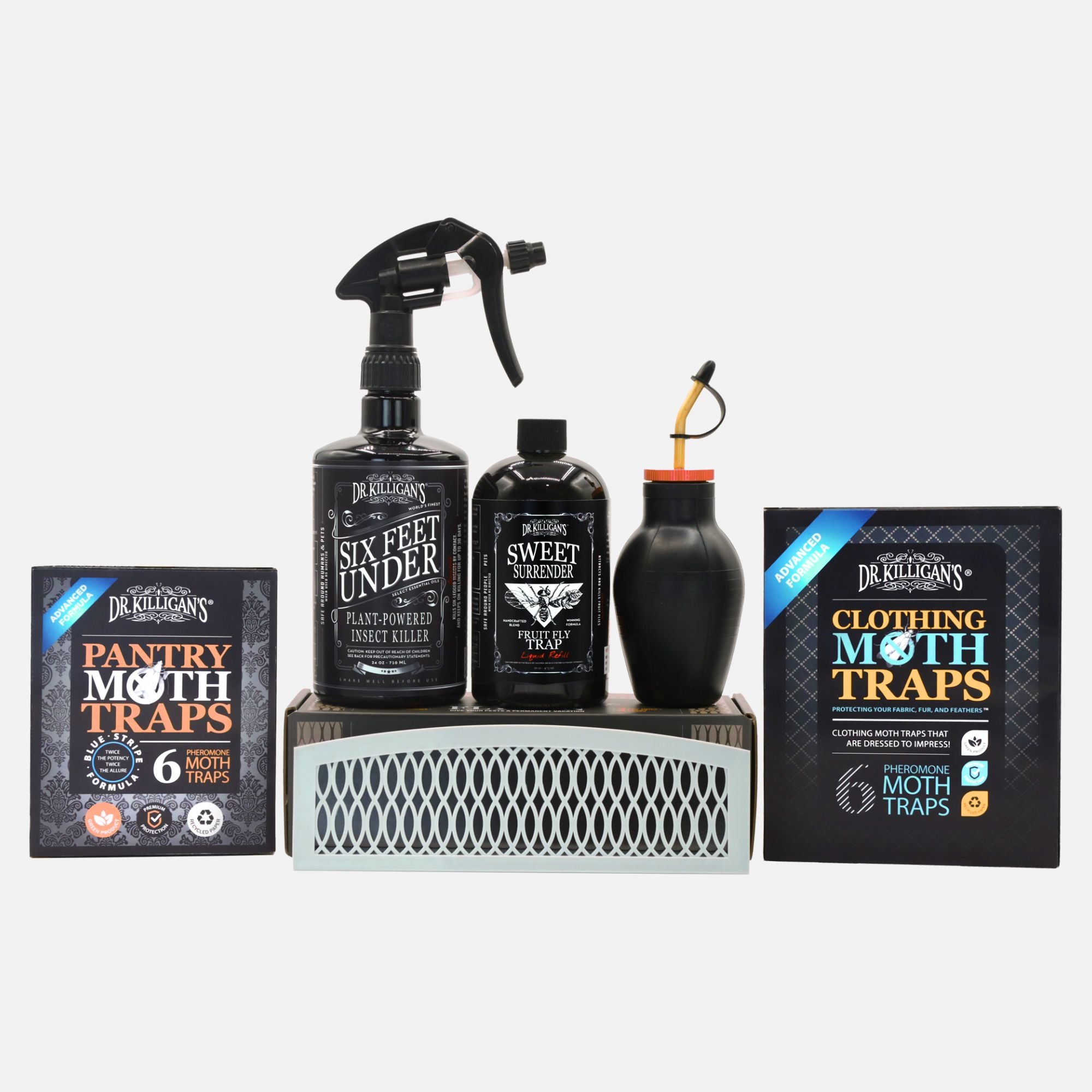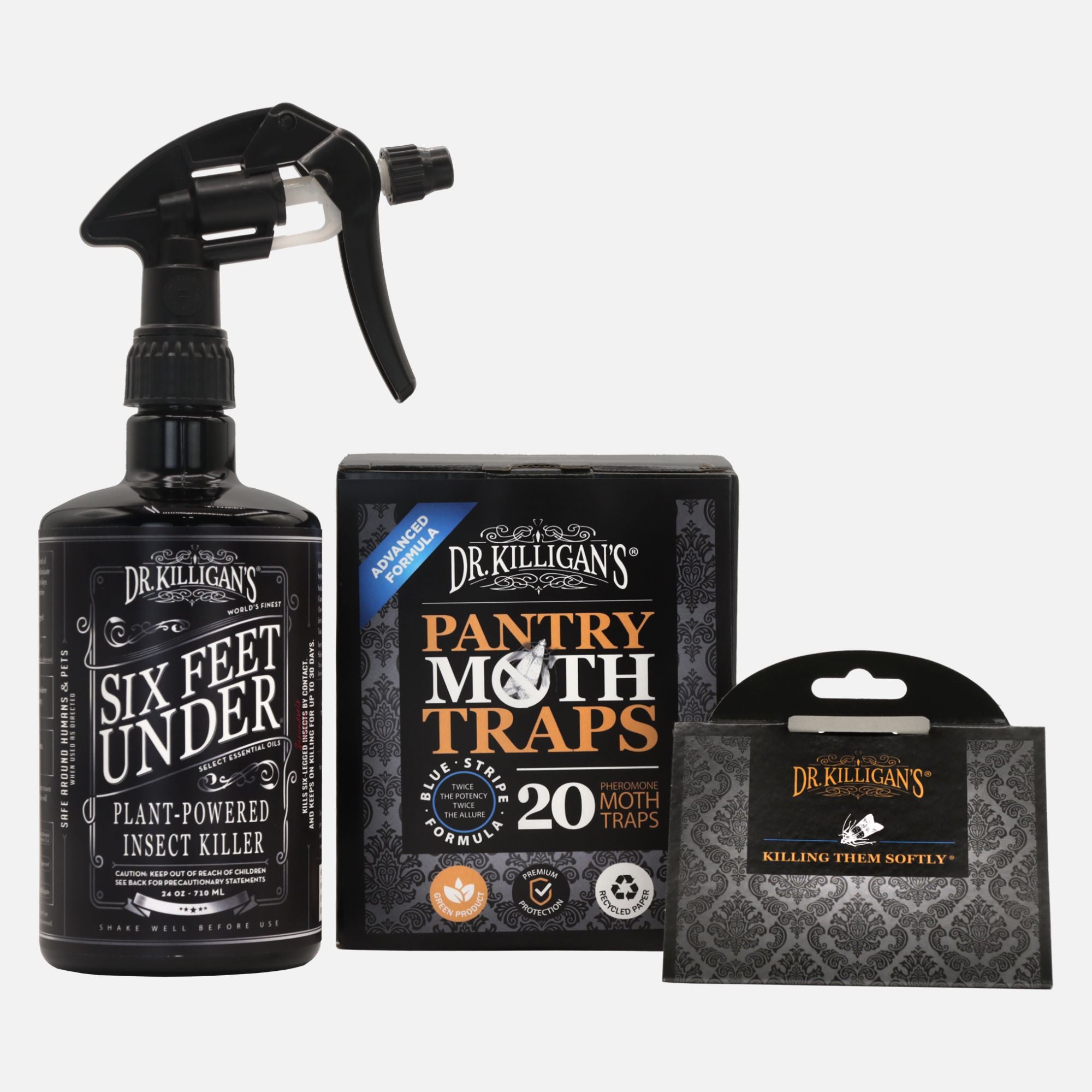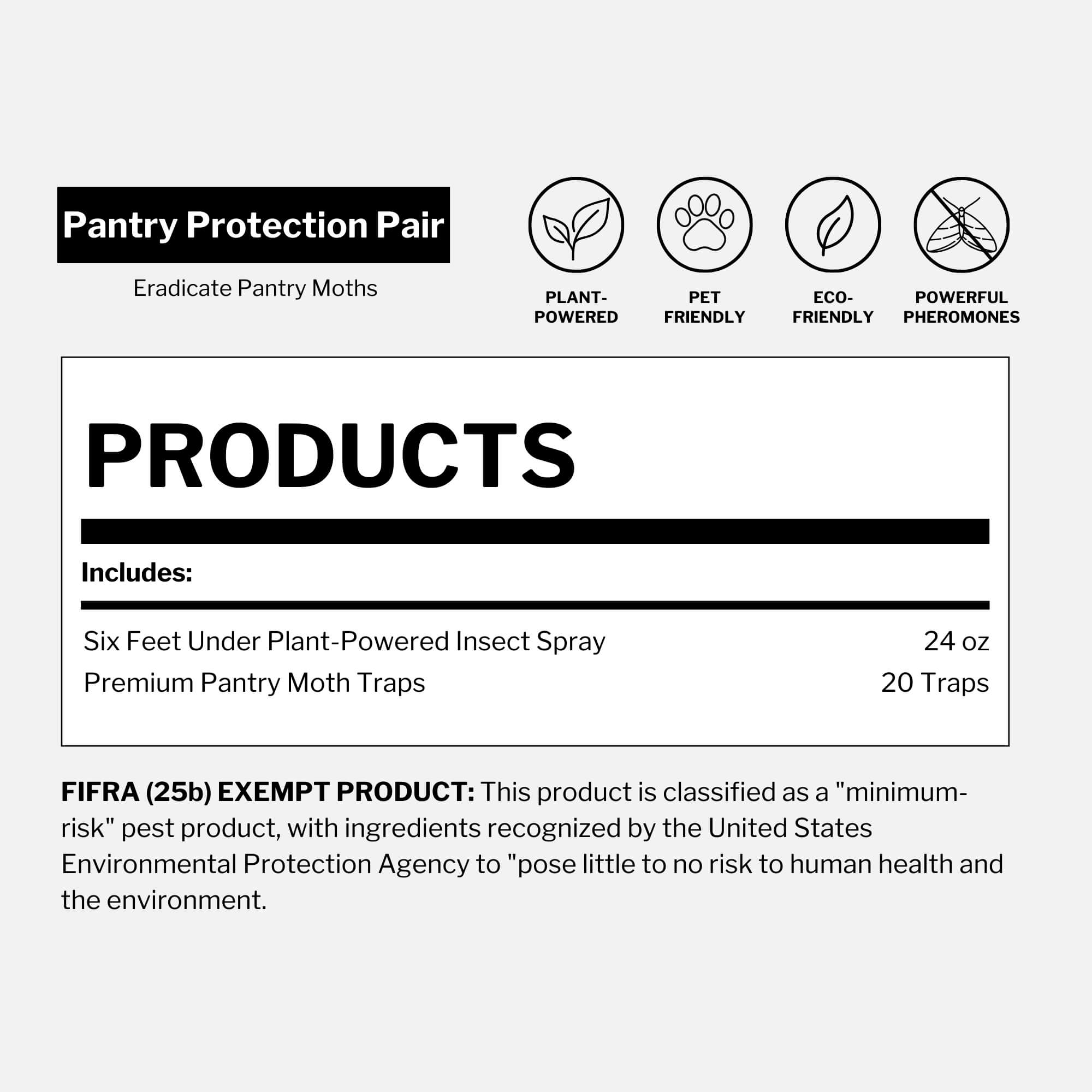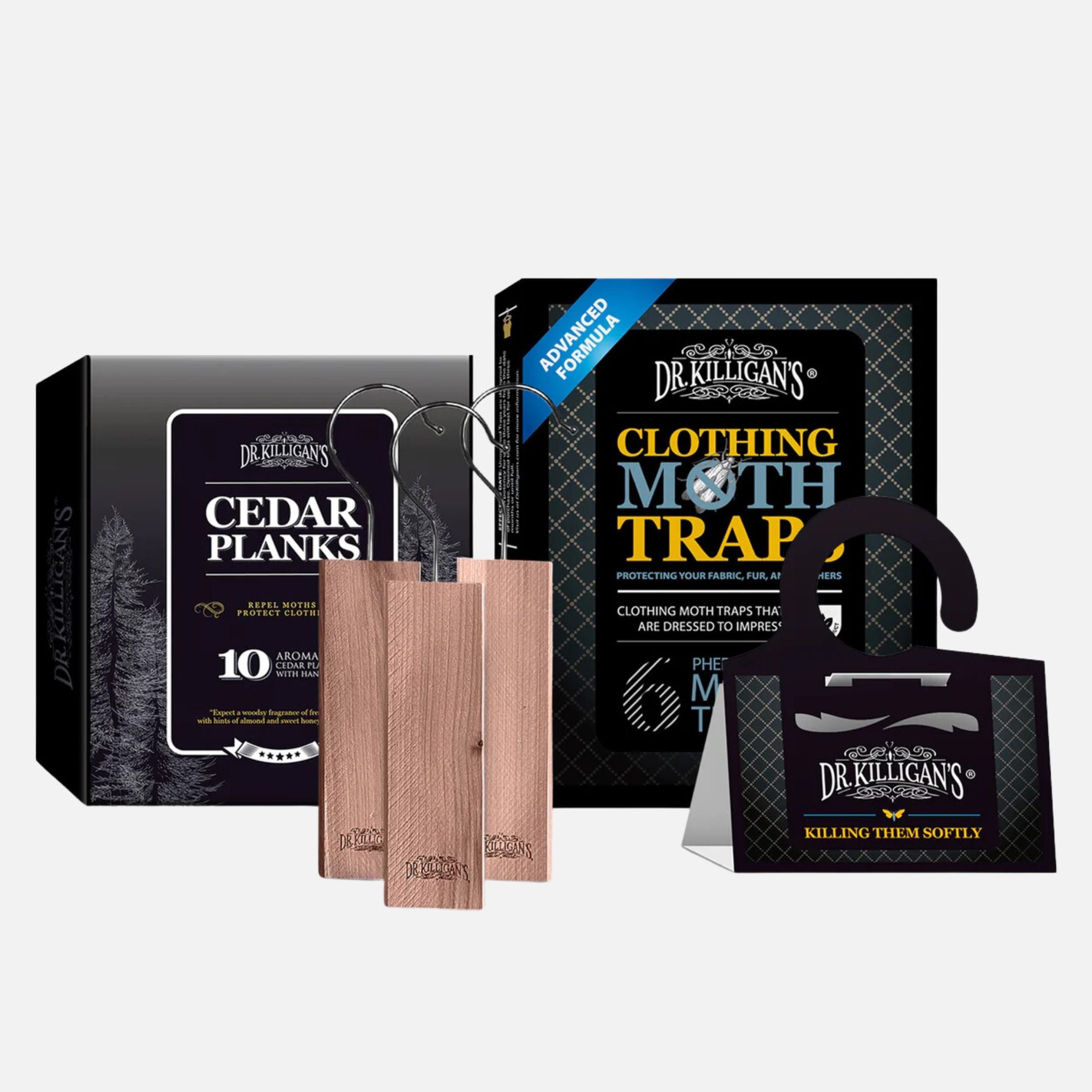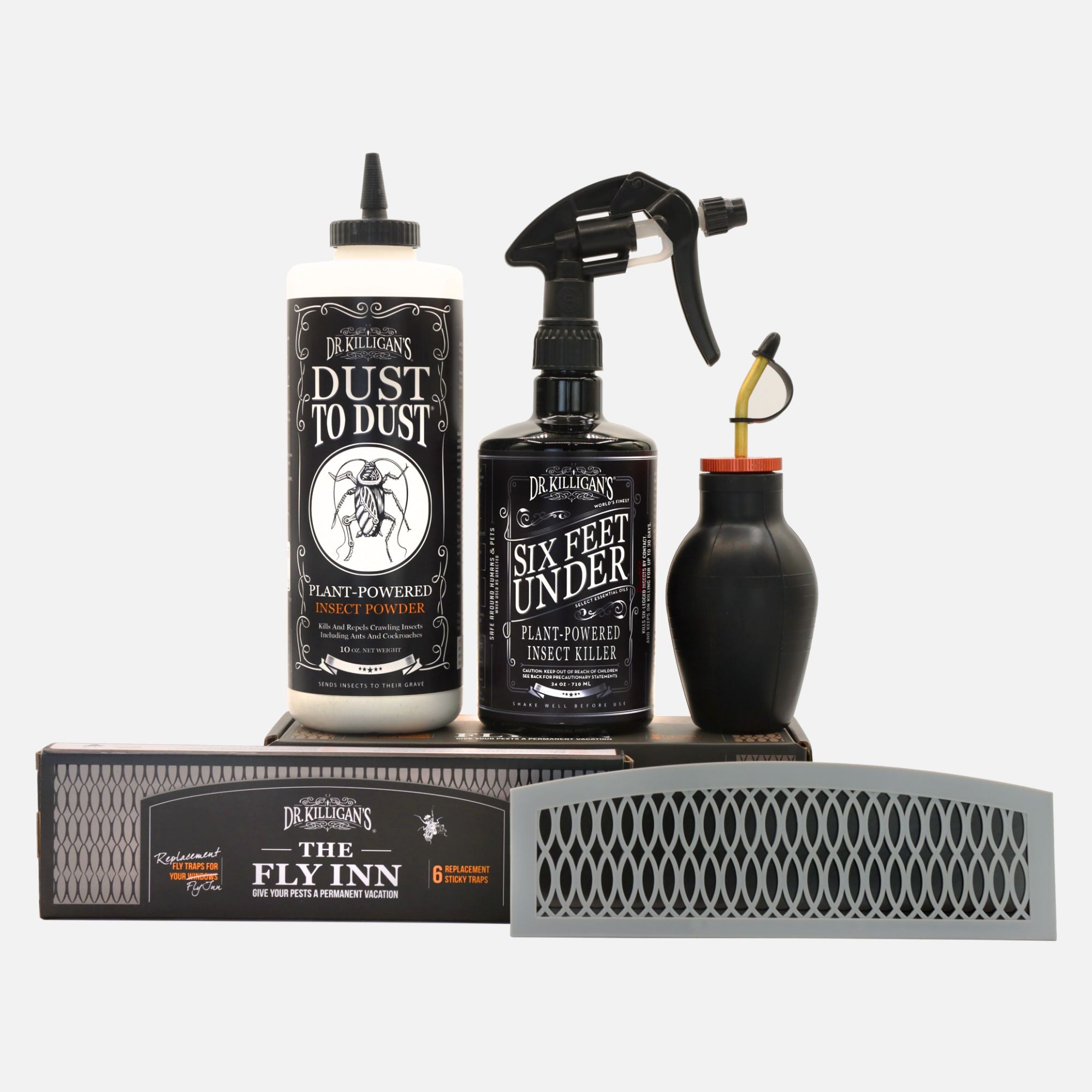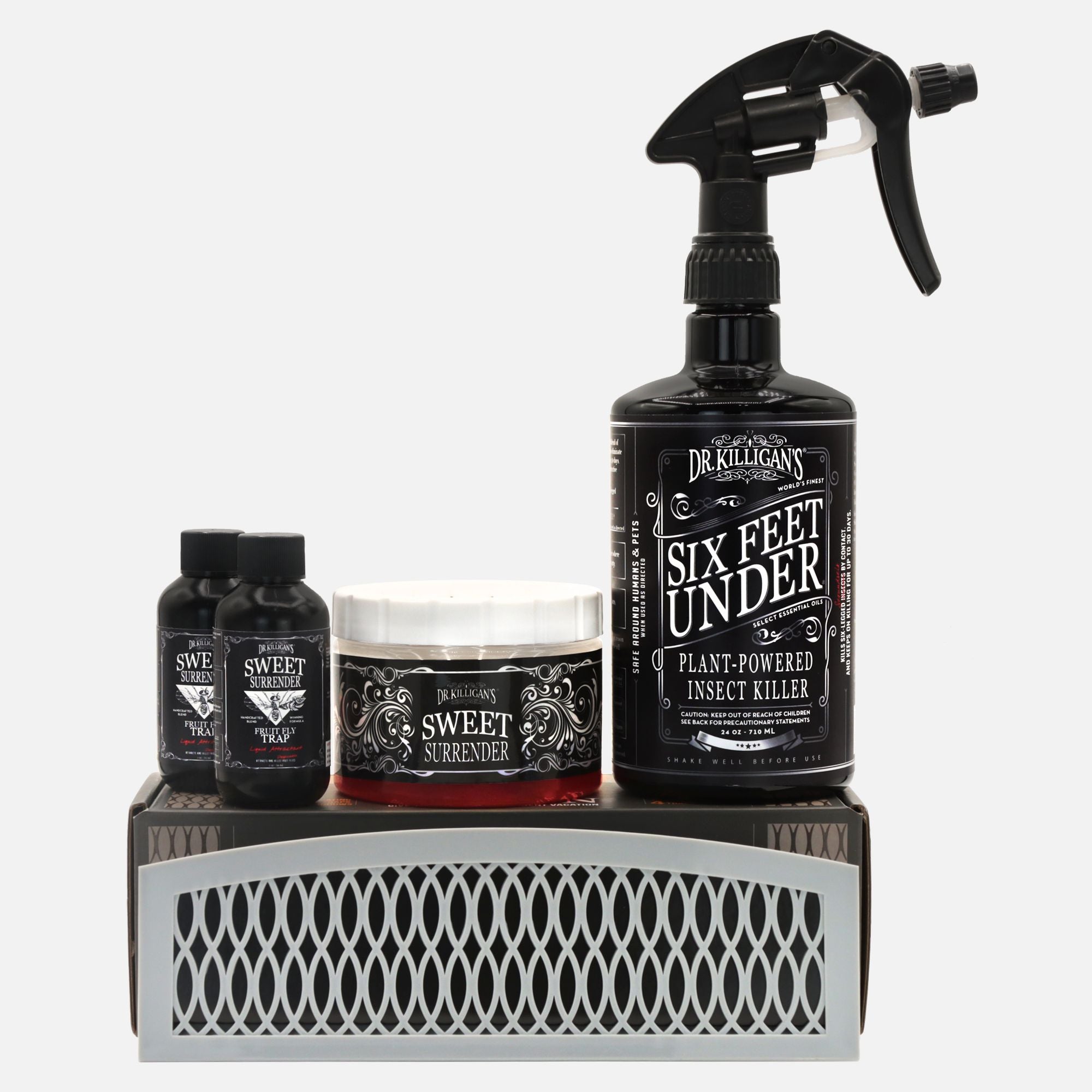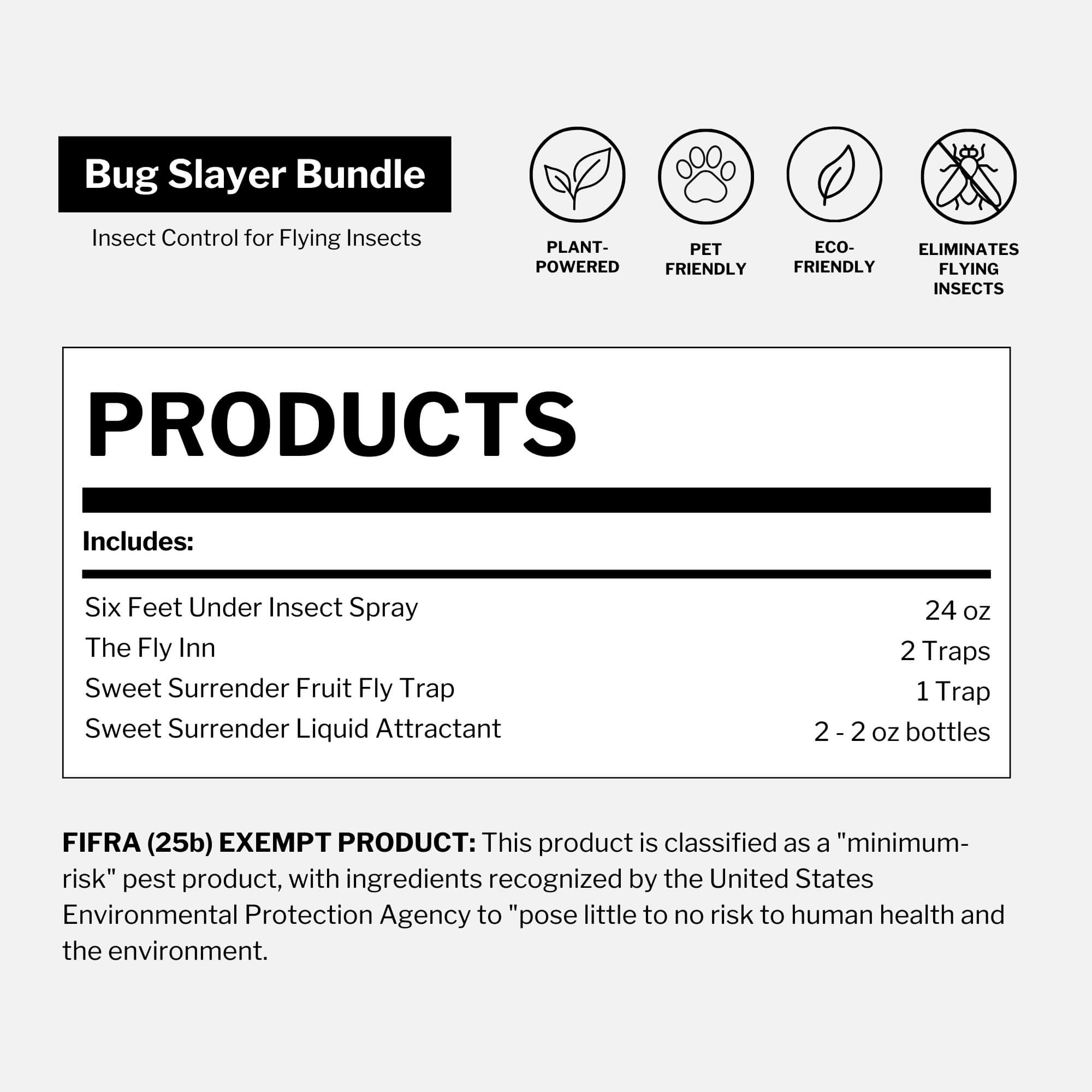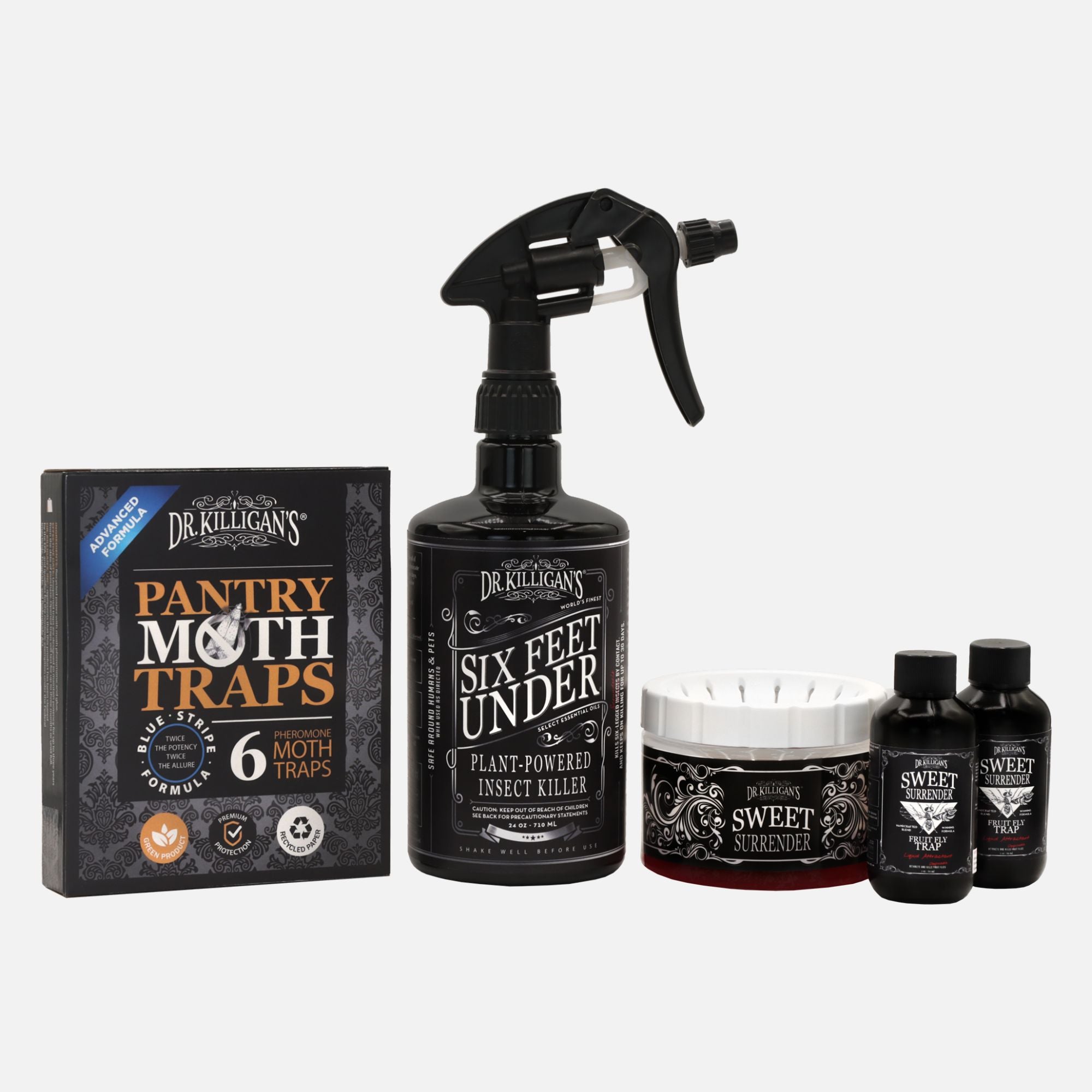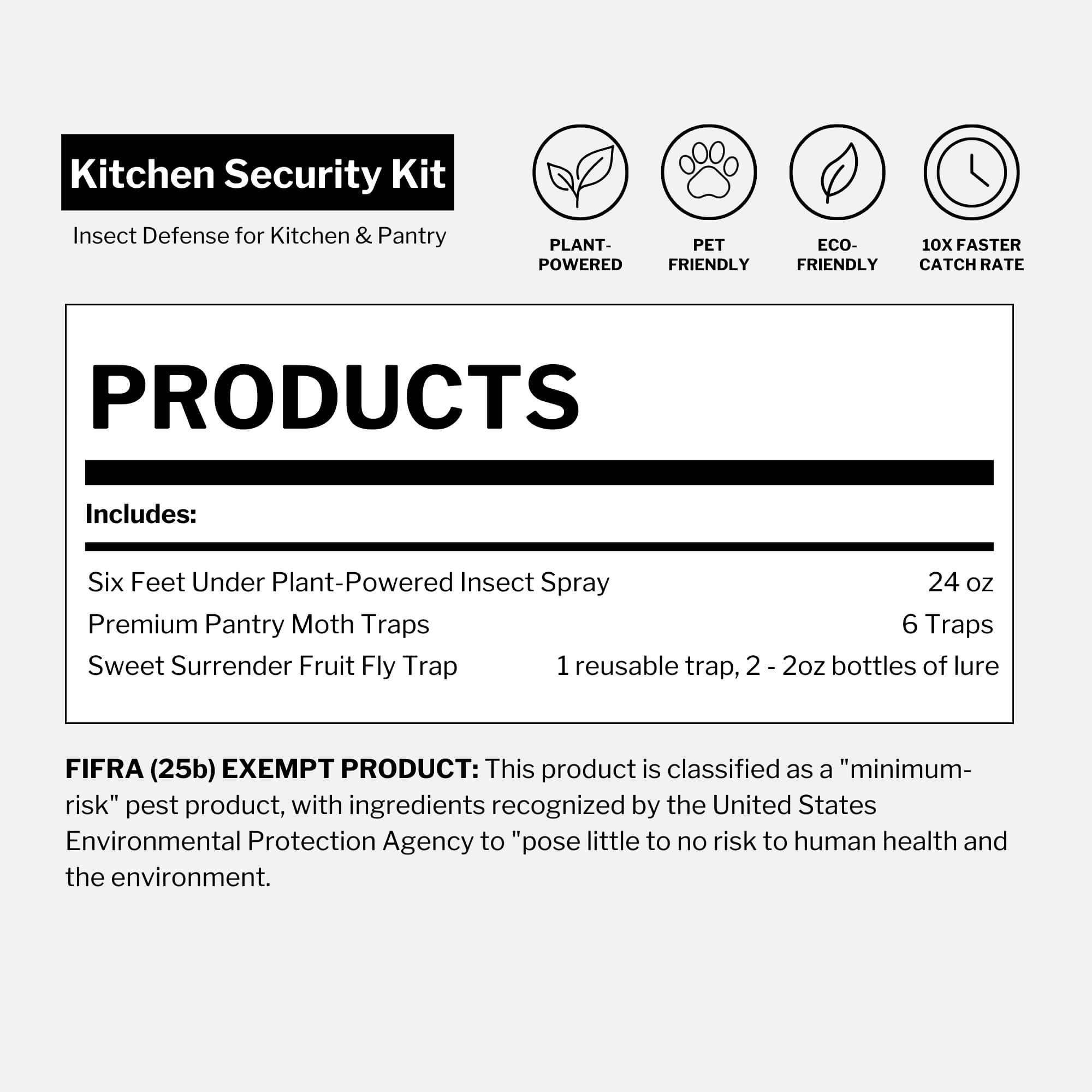Updated on August 9th, 2025
If you share your home with a dog, cat or other furry friend, that question is more important than ever. Flea collars, bug sprays and chemical treatments can keep pests away—but some contain ingredients that could harm your pet.
The safest pest control products for pets are those that avoid harsh synthetic chemicals, leave no toxic residue and are safe when used as directed. At Dr. Killigan’s, we create plant-powered solutions that protect your home from fleas, ticks, ants and more—without putting your animals at risk.
Unsafe pest control ingredients to watch for:
- Permethrin & pyrethrins—Highly toxic to cats and dangerous to small dogs.
- Tetrachlorvinphos (TCVP)—Linked to neurological harm and developmental issues in children.
- Fipronil—Can cause seizures, tremors and skin irritation.
- Imidacloprid—Harmful to aquatic life; may cause drooling, vomiting or lethargy in pets.
- Amitraz—Toxic to cats; may cause weakness, vomiting or low body temperature
In this guide, you’ll learn:
- Which pest control products are safe for cats and dogs
- Common ingredients to avoid
- Safer alternatives that work for your home and yard
- How to protect pets from ticks and fleas without direct-on-pet chemicals
Fleas & ticks: The most common pests that threaten pets
1. Ticks: How to identify & protect your pet
Ticks are parasitic bloodsuckers—adults are about the size of a sesame seed, while nymphs are closer to a poppy seed. They don’t have wings and, before feeding, they’re flat and oval. Once engorged with blood, they swell several times their size and are easier to spot.

Ticks attach as your pet brushes past tall grass, weeds or low branches. Once latched, they bury their head into the skin and feed for days before dropping off. Tick bites are usually painless, so you might not notice until after the tick is gone, leaving behind a red, inflamed spot.
Dogs are more commonly affected, but outdoor cats can also pick them up—especially in rural areas. Always check your pet after potential exposure, focusing on blood-rich areas like the abdomen and upper hind legs.
Prevention tips: Keep grass and weeds trimmed in your yard, avoid letting pets roam in tall vegetation and use pet-safe tick sprays. During peak tick season (spring through early fall), perform daily tick checks and promptly remove any you find.
Note: For information on tick removal, see True or false: Bug myths revealed.
2. Fleas: How to identify & reduce risks
Fleas are tiny, jumping insects that feed exclusively on blood. About the size of a sesame seed, they’re dark, oval-shaped and hard-shelled. A single flea can bite up to 400 times a day and many dogs are allergic to flea saliva, making infestations miserable.

Cats can get fleas, too—often more visibly than ticks. Look for excessive scratching, hair loss or flea dirt (tiny black specks) on the neck, belly or tail base. A fine-toothed comb can help you spot them. [Note: These are telltale signs of an active infestation.]
Prevention tips: Regularly vacuum carpets and pet bedding, wash your pet’s bedding in hot water and use pet-safe flea treatments. Keep your yard clean and free of debris.
Treatments for fleas and ticks in pets
There are several ways to prevent and treat tick and flea bites in pets—collars, oral meds, sprays, dips, shampoos and powders.
1. Collars

Flea and tick collars provide localized protection where they touch, but don’t usually cover the whole body. Many contain potent pesticides like tetrachlorvinphos (TCVP) and propoxur—linked to cancer and nervous system damage. These residues can transfer to humans, posing risks to children who cuddle pets.
TCVP, in particular, is a neurotoxic pesticide the EPA once moved to ban due to risks to children, before reversing course in 2023. Despite known links to developmental and neurological harm, collars containing TCVP remain available from major retailers.
According to Beyond Pesticides, these collars pose “unacceptable risks” to children.
Bottom line: Always check ingredients—and when possible, choose safer, plant-based alternatives.
2. Oral medication
Oral flea and tick treatments are a convenient option for both dogs and cats. These chewable tablets or pills—given monthly or sometimes every 12 weeks—work systemically, killing adult ticks and immature fleas before they can reproduce. Because they’re ingested, they avoid residue on your pet’s fur, reducing exposure risk for humans compared to collars or topical spot-ons.
While many pets tolerate these medications well, some may experience side effects. This includes upset stomach or, more rarely, vomiting. Notably, medications containing isoxazolines—a class of pesticides—have been associated with neurological side effects in some dogs and cats.
The FDA warning on products in the isoxazoline class highlights potential neurological effects such as tremors, ataxia and seizures—even in pets with no prior neurological issues.
Note: Ataxia is uncoordinated movements
Bottom line: Always talk to your vet before starting an oral flea or tick medication and monitor closely for side effects.
3. Dips & shampoos
Flea and tick dips or shampoos can kill parasites on contact and help eliminate eggs and larvae. When used correctly, they may provide up to 28 days of protection.
However, these products often contain potent ingredients like amitraz or pyrethrins—which can cause toxicity if ingested or improperly diluted. Cats are particularly sensitive to pyrethrins and the synthetic version, permethrin, which can be deadly even in small amounts. Sensitive pets—such as toy breeds, young puppies or elderly animals—are at higher risk for adverse reactions.
Bottom line: Dips and shampoos can be effective for immediate relief but carry a higher risk than many other options.
4. Sprays

Flea and tick sprays provide quick knockdown of pests and short-term protection—helpful between baths or before outdoor trips. They often contain active ingredients like fipronil, imidacloprid, methoprene, pyriproxyfen or permethrin.
These chemicals—identified by People for the Ethical Treatment of Animals (PETA)—have been associated with adverse health effects in laboratory animals, such as vomiting, diarrhea, drooling, muscle tremors and seizures.
Tip: When using any spray, avoid your pet’s face and prevent contact with other animals until the product is dry.
According to PETA, the active ingredients in these solutions... have caused serious health problems in animals in laboratories.
Bottom line: Always read labels carefully and consult your veterinarian before using sprays.
5. Powders

Powders are a dry topical option for pest control, but they come with some cautions. If inhaled, they can irritate the lungs or mouth of both humans and animals. Many contain chemicals that can be absorbed through your pet’s skin.
Tip: Use small amounts, rub slowly into your pet’s skin and avoid contact with everyone’s face, mouth and eyes during application.
For cats, avoid any powder containing pyrethrins or permethrin—these are toxic to felines.
The safest pest control for homes with pets
If you’re looking for pet-friendly pest control—whether it’s dog-safe bug spray, non-toxic flea powder, or gentle tick prevention for cats—the safest choice is a formula that:
- Contains plant-based or food-grade ingredients
- Leaves no harmful residue
- Is safe for pets when used as directed
At Dr. Killigan’s, we don’t offer direct-on-pet medications. Instead, we design products that treat your home and yard—reducing your pet’s exposure to fleas, ticks and other pests before they ever reach your furry family member.
Our top pet-safe solutions
-
Dust to Dust Plant-Powered Insect Powder is a pet-safe solution designed to combat fleas and ticks without toxic residue. Made with essential oils, stearic acid and silica, it works—best applied with the Insect Buster Bulb Duster—along baseboards, in pet bedding and on carpets. Safe for dogs and cats once settled. Remove pets during application and allow the dust to settle before re-entry.
-
Six Feet Under: Barricade is an outdoor perimeter spray with peppermint and wintergreen oils that stops pests before they get inside. Safe for dogs and cats once dry; apply along walkways, kennels and fences.
- Six Feet Under Plant-Powered Insect Spray is fast-acting and kills bugs on contact using clove and cinnamon essential oils. Safe for dogs and cats when dry—just avoid spraying directly on pets and let treated areas dry completely before re-entry. Ideal for pet bedding, baseboards and crate areas.
Bottom line: Choosing pet-safe pest control doesn’t mean sacrificing effectiveness. When used as directed, these plant-powered products protect your home and your pets—naturally.
Final word
Choosing the right pest control for your pet isn't easy—and it shouldn’t be taken lightly. Between confusing labels and chemical-laden formulas, it can feel like you’re trading one risk for another. Avoid products with harsh chemicals whenever possible, follow label directions and focus on prevention—keeping your home and yard pest-free with natural, pet-friendly solutions.
With the right approach, you can protect your pets from fleas, ticks, and other pests without compromising their health—or yours.
Still have questions? Reach out. We’re here to help you choose what’s best—for your home and your pet’s health and happiness too.




